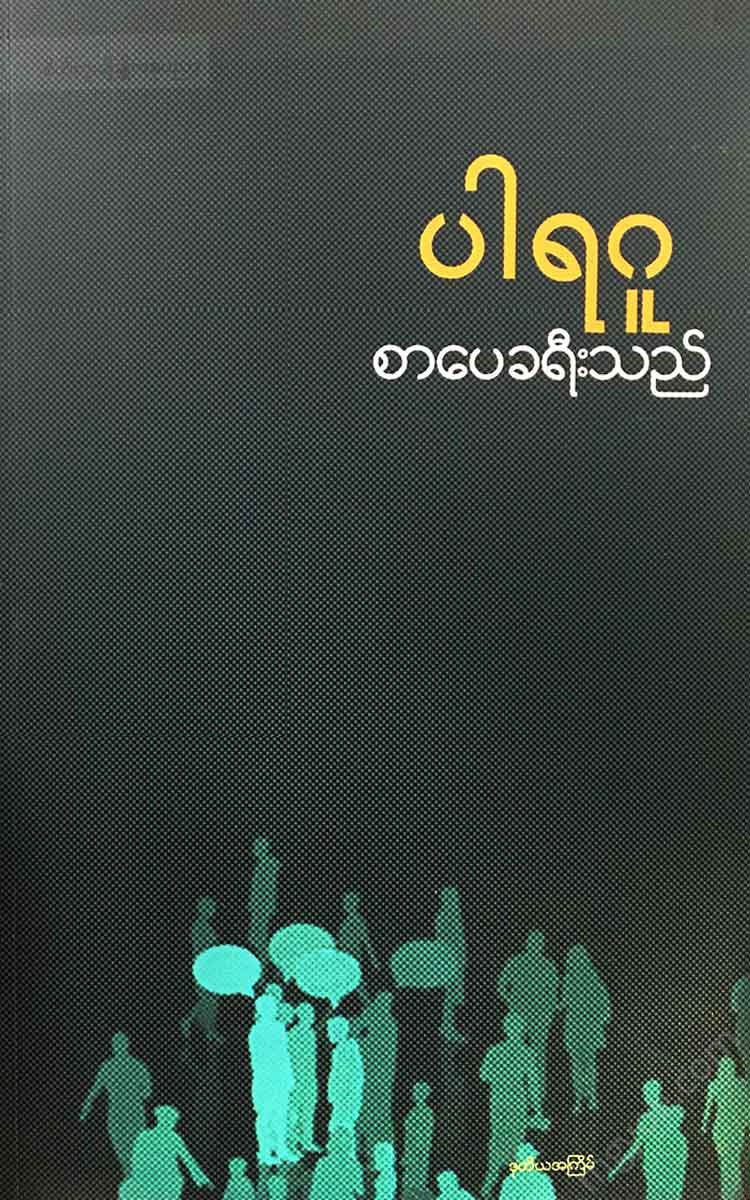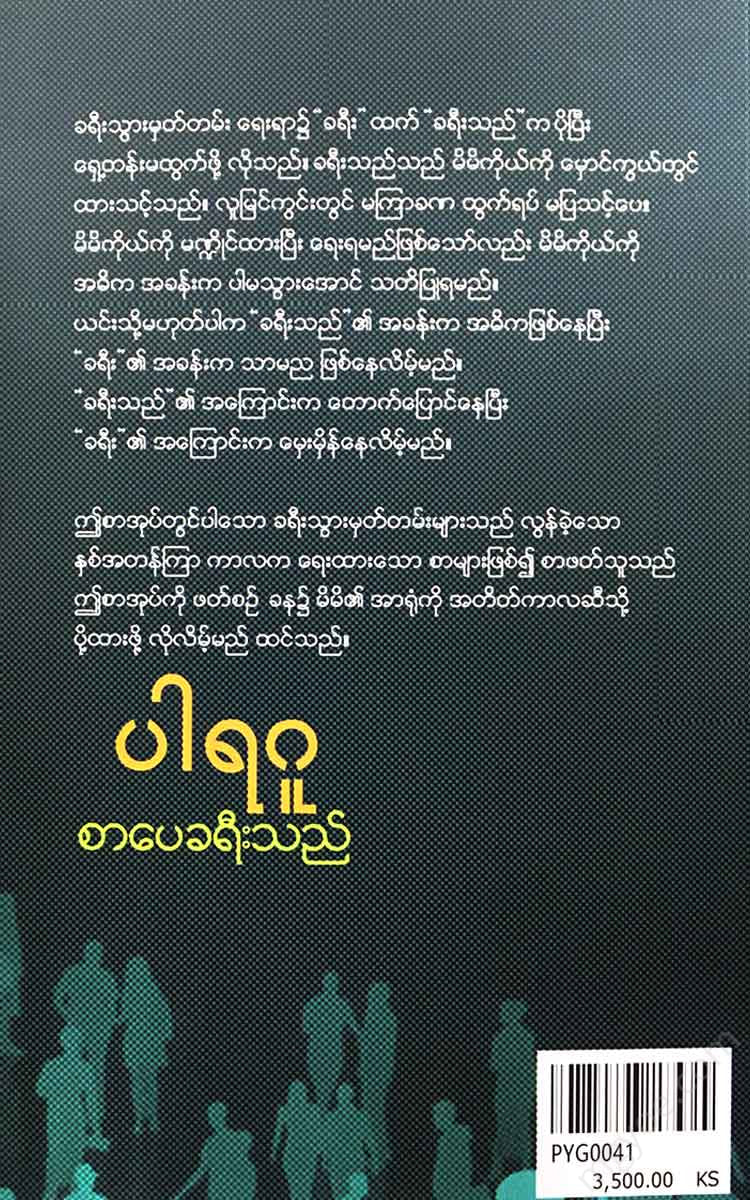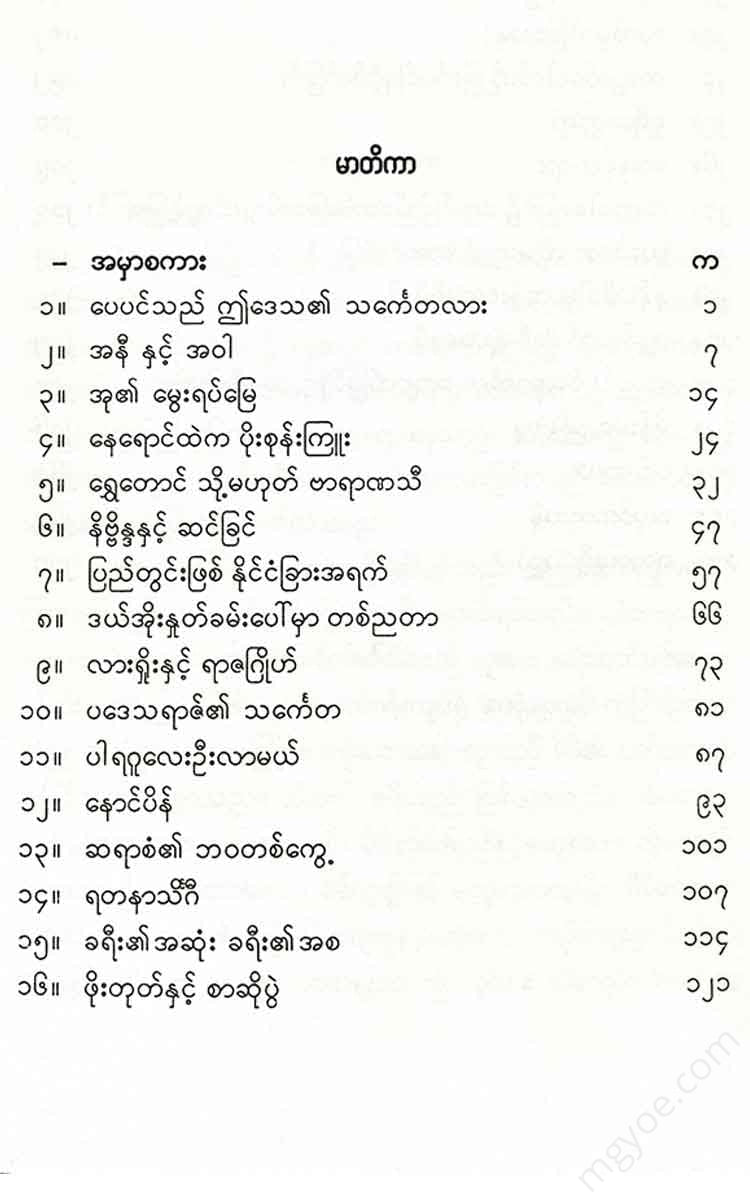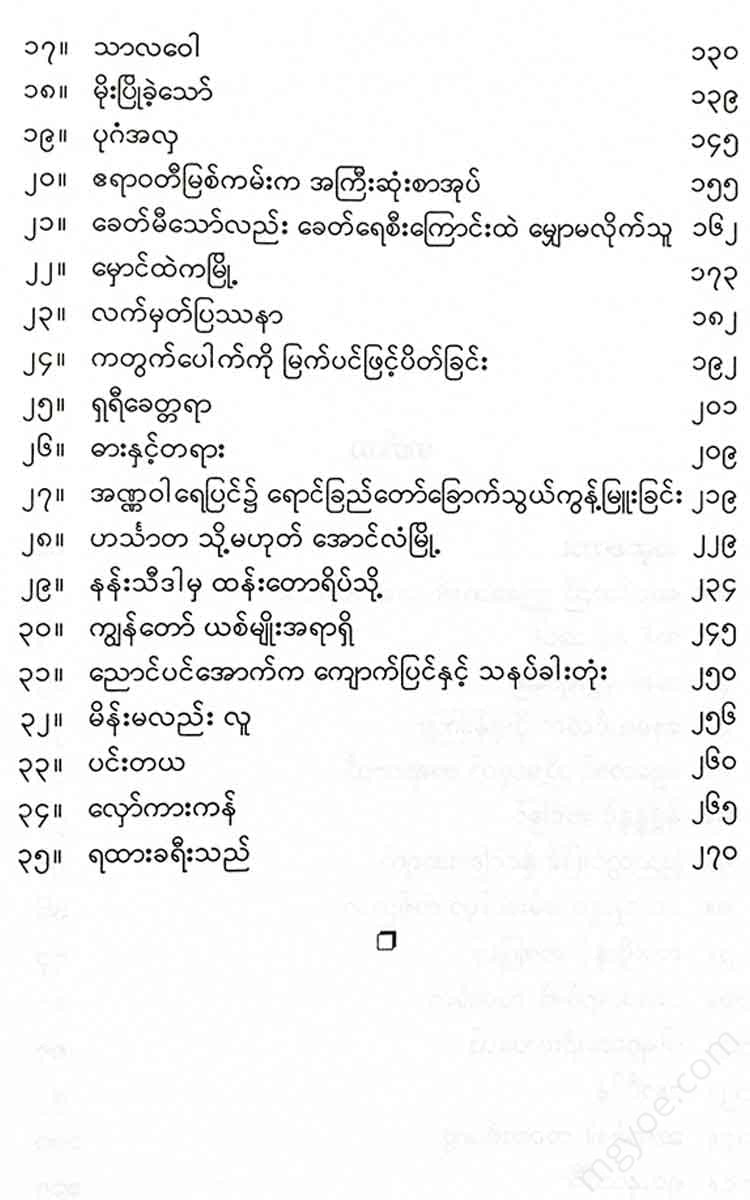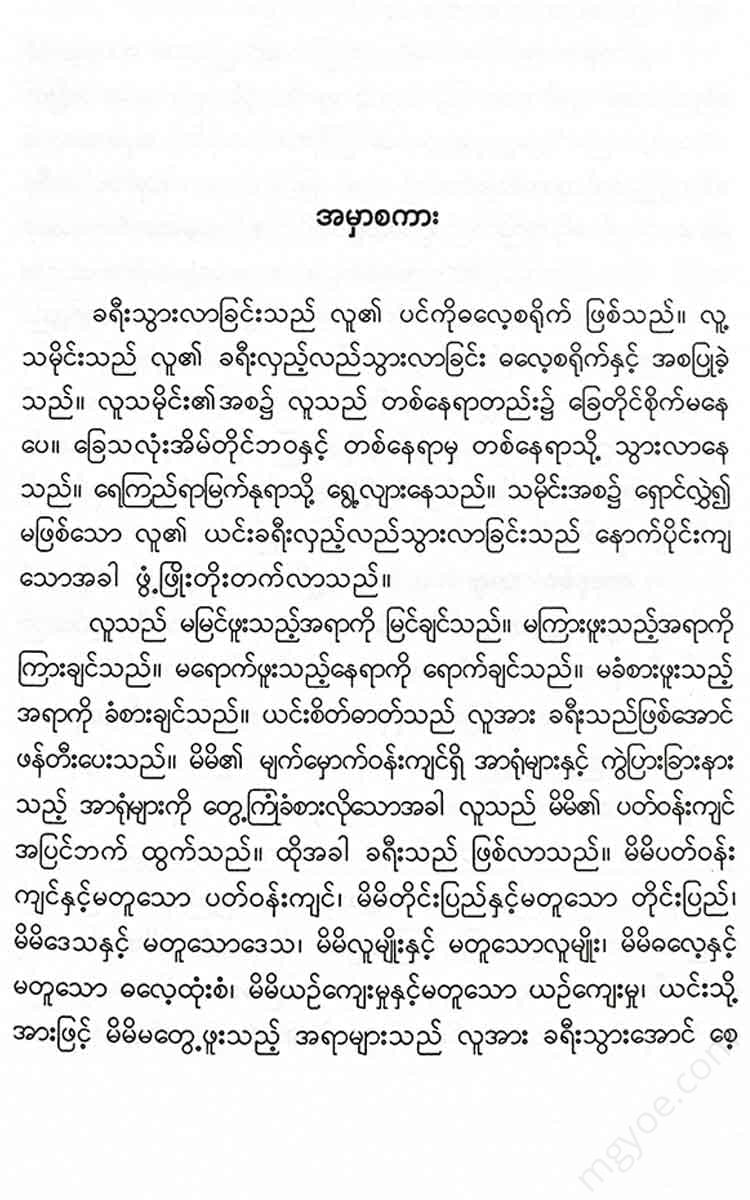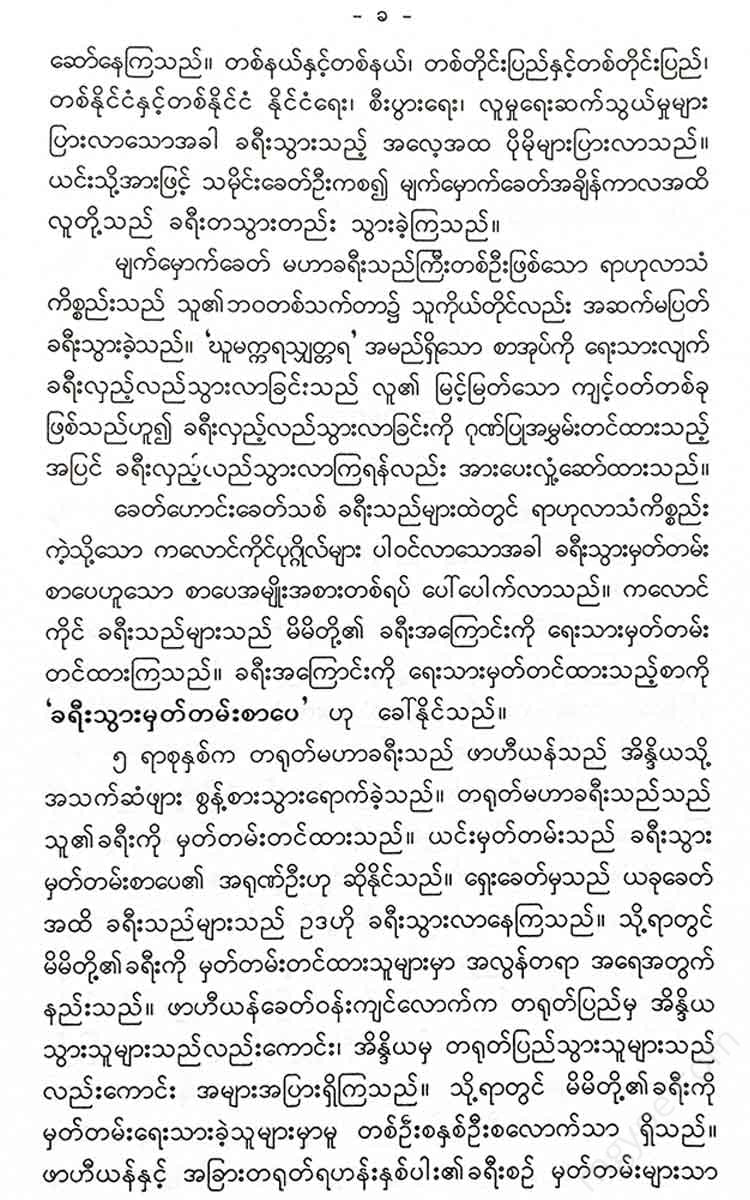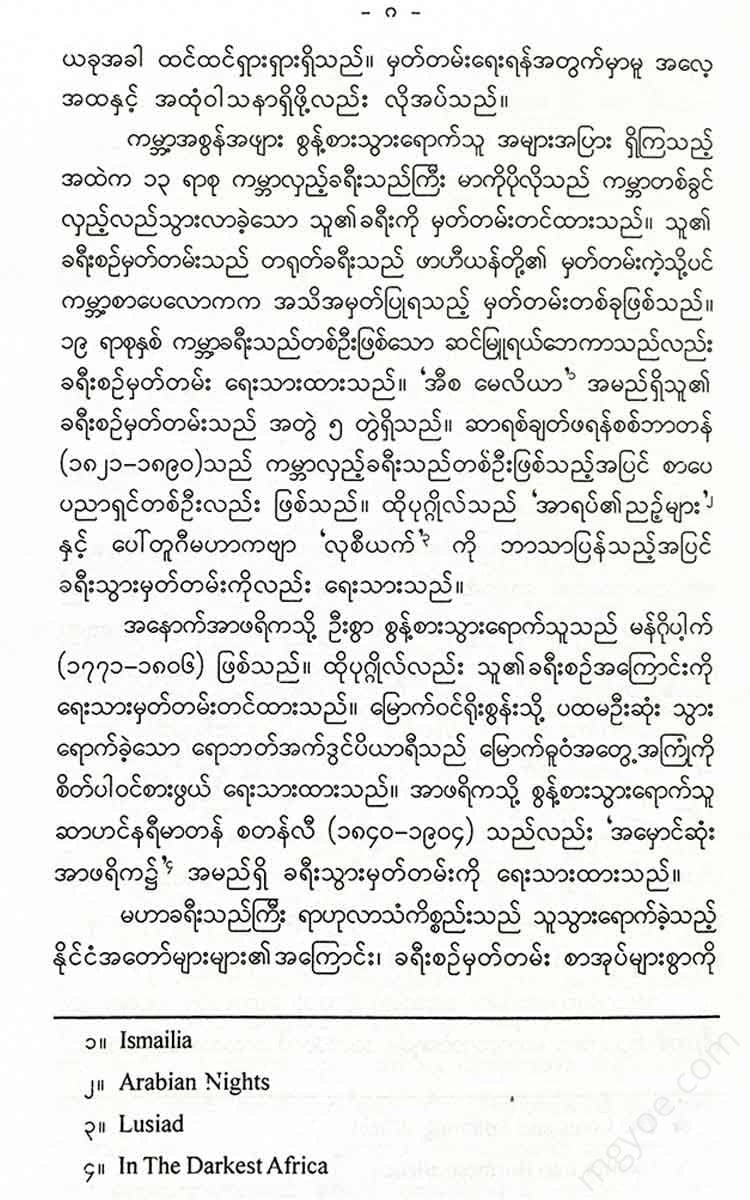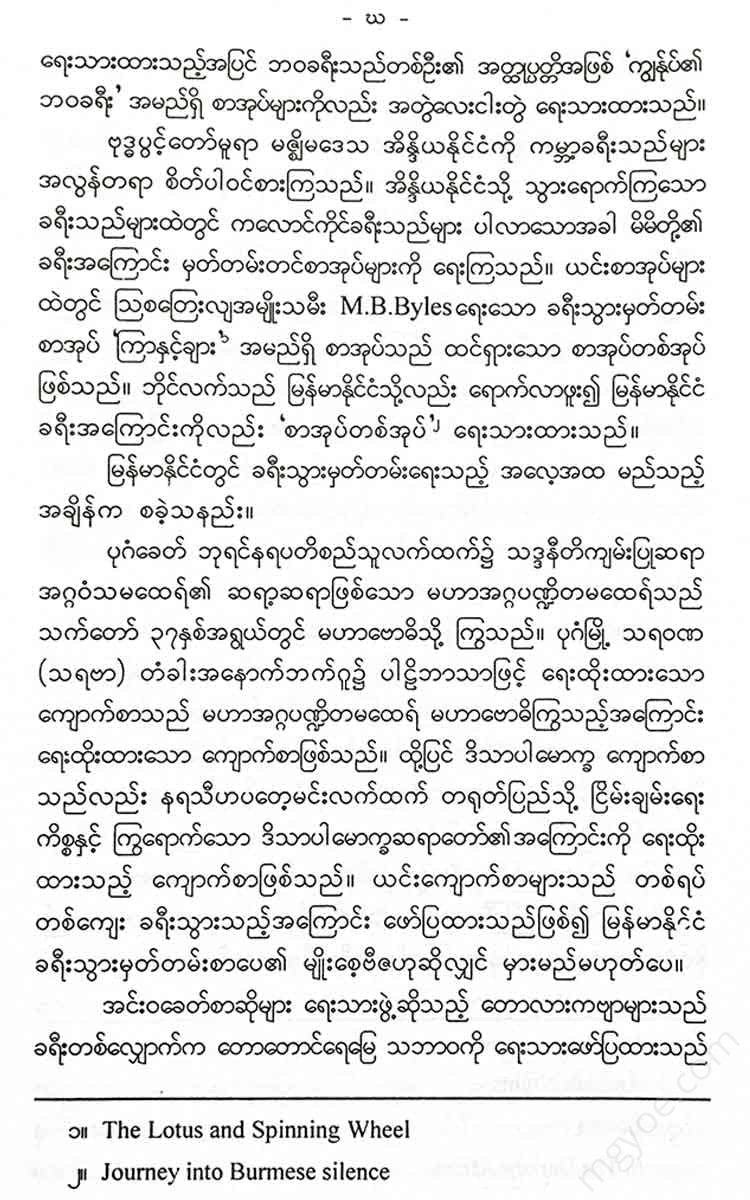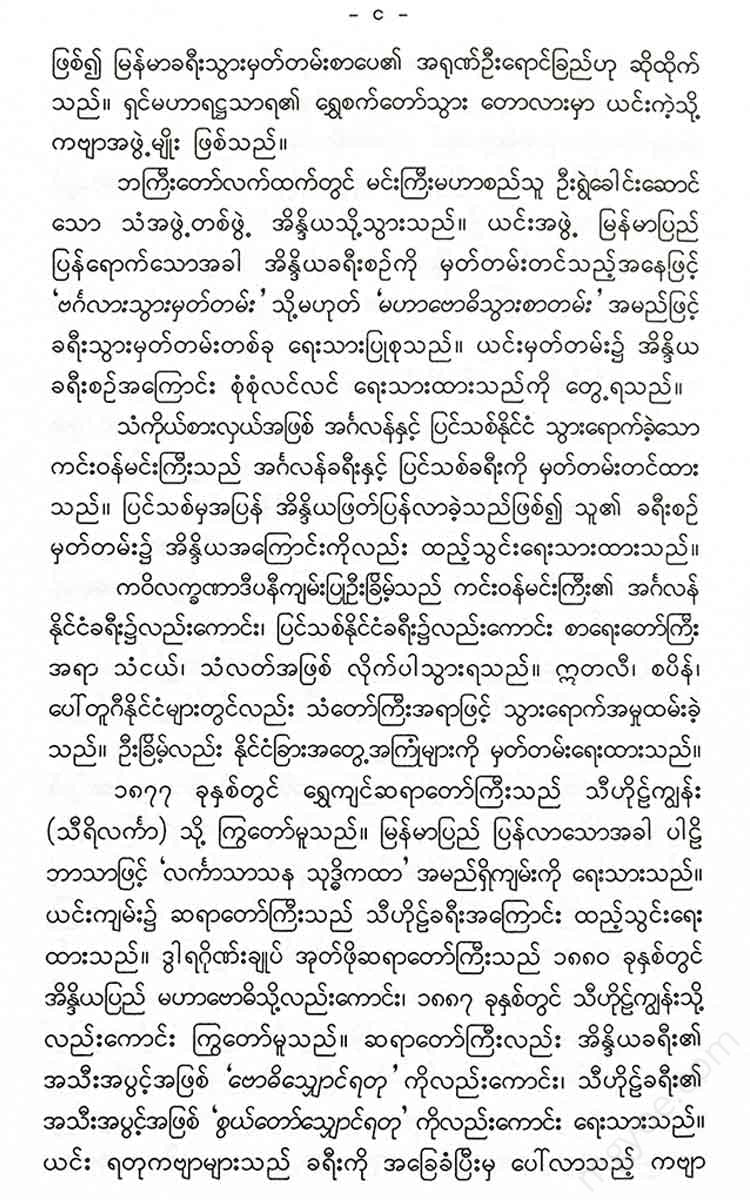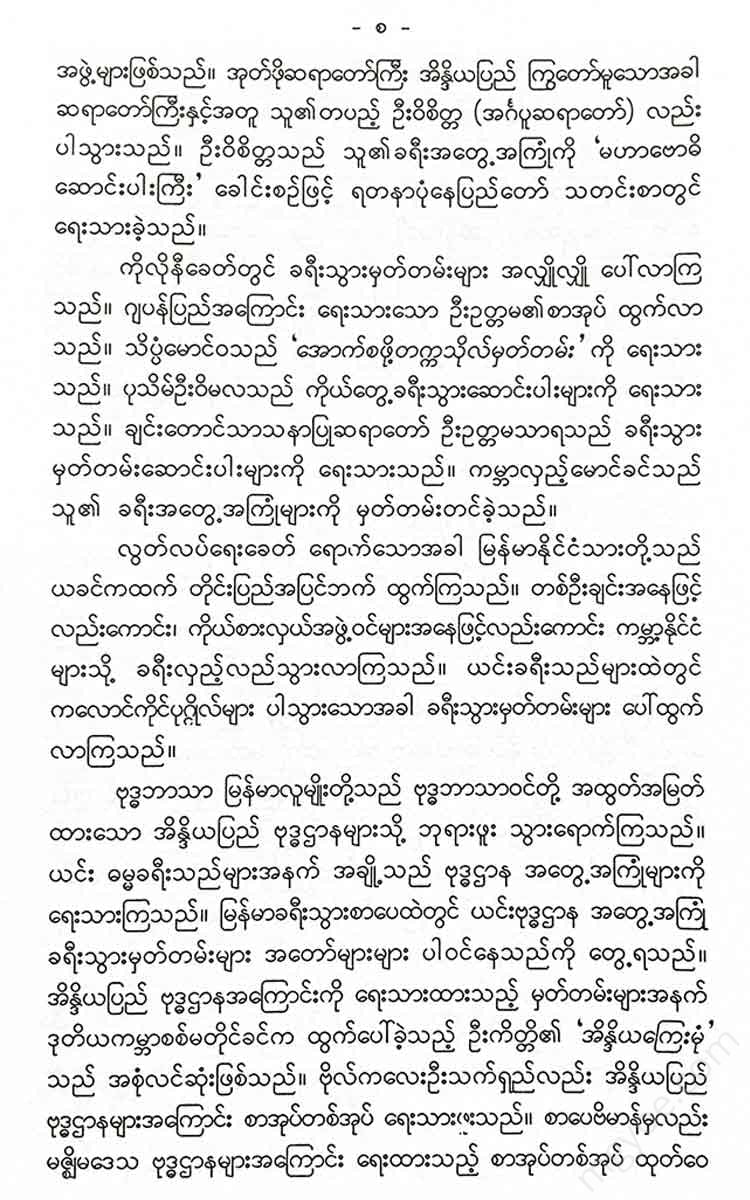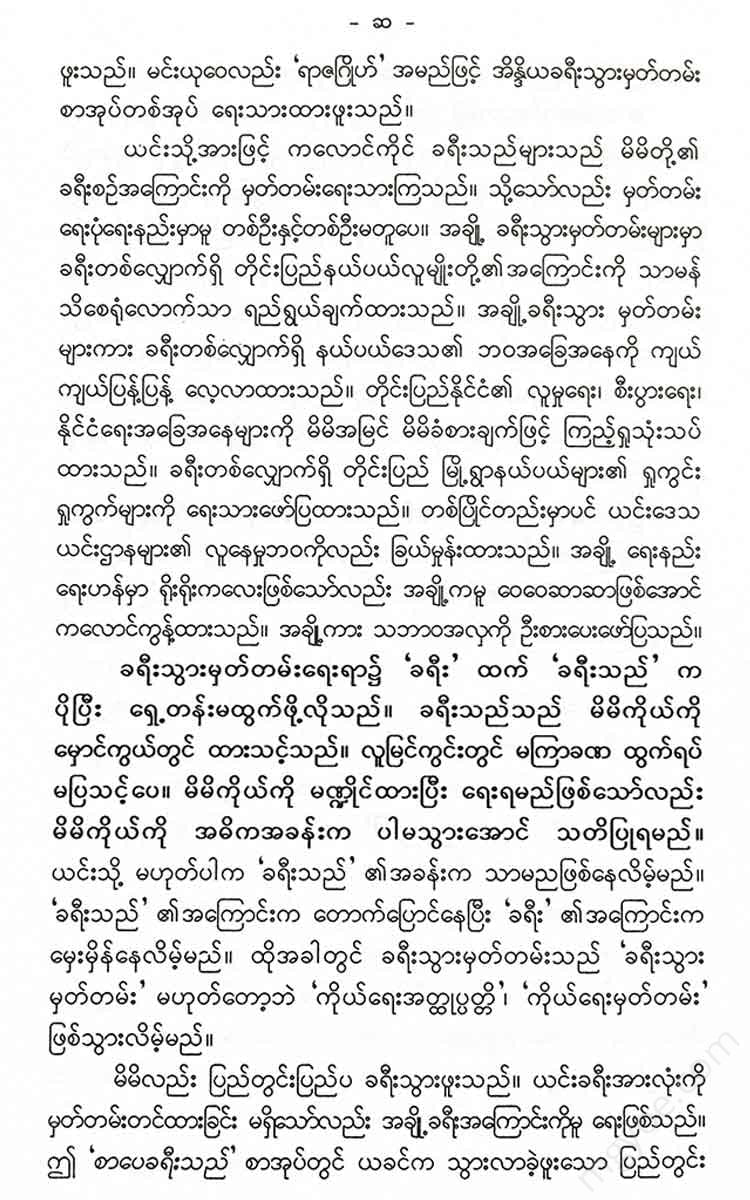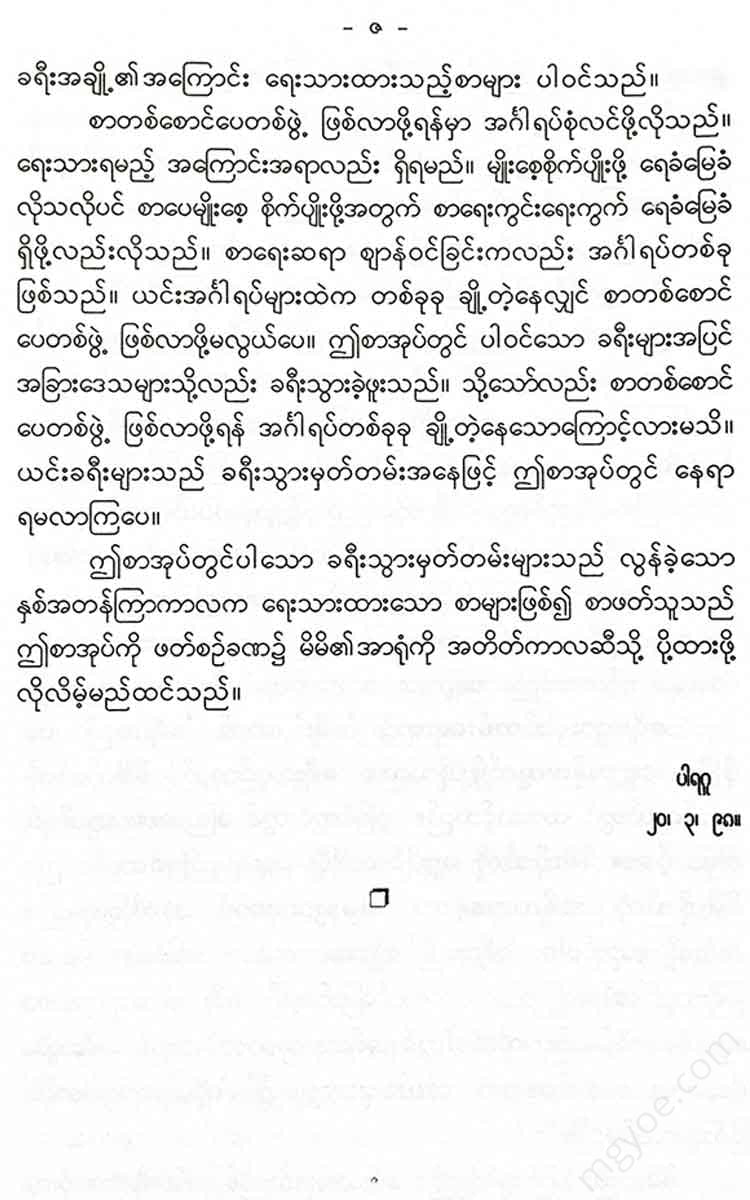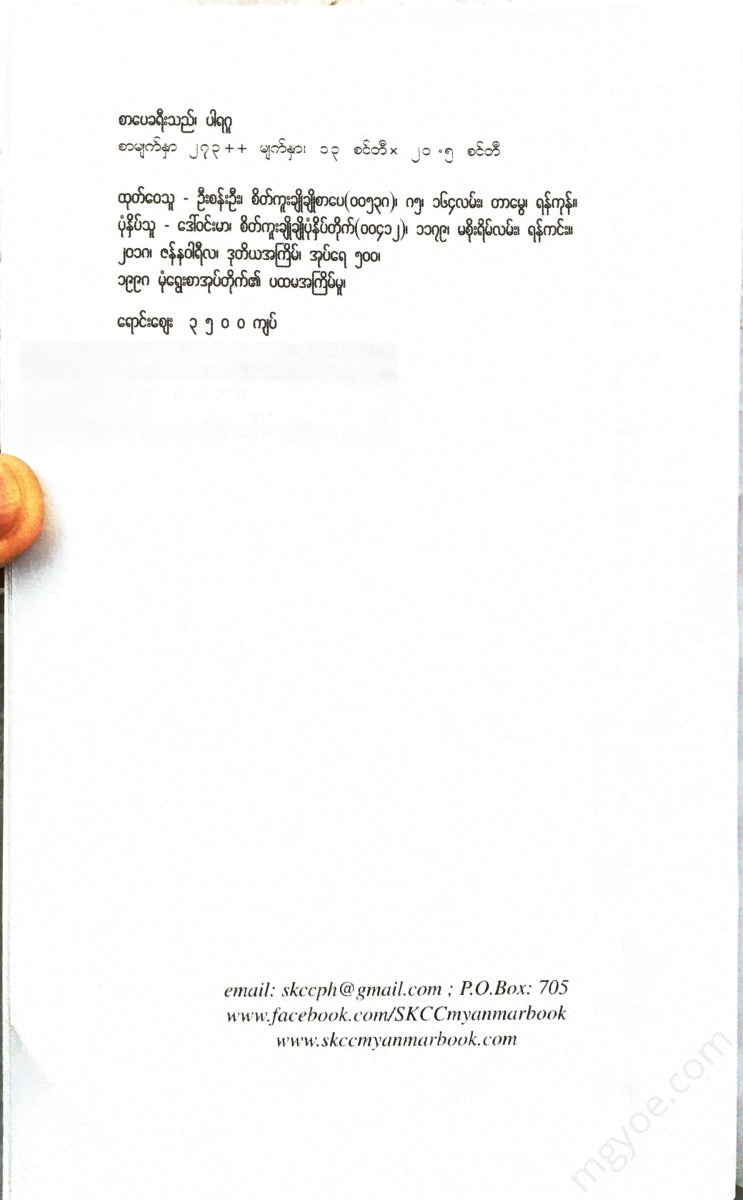စိတ်ကူးချိုချိုစာပေ
Scholar - Literary traveler
Scholar - Literary traveler
Couldn't load pickup availability
Is the Pei tree a symbol of this region?
As soon as you enter the school grounds, you will see a very special betel tree. If the saying goes, "One betel tree is one crow," then this is the time when this betel tree is at its most productive. The betel fruit is in clusters at the top of the betel tree.
A group of us writers who were on a literary journey arrived at the Natphetawara Monastery when we reached Taungdwingyi. This monastery is a monastery that is closely related to the history of Burmese literature. The great poet and poet Maha Thila Wunsa, including the four great poets, spent his time in this monastery. The great poets who wrote the poems of Maha Thila Wunsa such as Paramitaw Khan Po have passed away hundreds of years ago. However, the lineage of the poets has not been interrupted. Here, a new poet, a symbol of literature, has emerged as a descendant of the previous poet. Although Maha Thila Wunsa has passed away hundreds of years ago, the lineage of the poets of Maha Thila Wunsa has continued to flourish.
The continuity did not end here. The Chairman emerged as a literary successor to the great Thela Wantha.
I have been to this temple three times. The first time I saw the monk in person. The second time (1978) I saw only the monk's body and the tomb. The third time (December 1979) I saw the statue of the monk standing tall on top of the tomb. The sculptor U Lwin made the statue. U Lwin was a great admirer of the monk. The sculptor seemed to have shown great skill in making the statue of someone he respected. The statue of the monk holding a pen and a book is alive.
“It has been a year since the monk passed away. There were plans to hold a statue unveiling ceremony on the anniversary. However, due to the drought this year, people are struggling financially. Therefore, the grand unveiling ceremony has been postponed.”
The chairman told me. It seems they were right. When I visited the second time, the lake adjacent to the Natphe Towra Monastery was green with lotuses and lotuses. Now, on the third time, even the cracks in some parts of the lake are already cracked, even though it was the first time.
We entered the monastery where the monk resided. Inside the monastery, the monk's belongings were displayed. The belongings were just a few simple items, such as three robes, a mosquito net, a pillow, and a flashlight. Inside the monastery, which was full of books, we saw books on various subjects, English, Burmese, and Pali. He was content with everything and had no desire for material gain.
The monk showed me the ideal of a monk's life.
On our way back from Natphe Towra School, we each brought a betel nut from the big tree at Natphe Towra School as a symbol of literature. This betel nut was a gift given to us by the great literary scholars who enjoyed Natphe Towra.
Our journey takes us back centuries. We cannot help but visit Vishnu, which flourished between the 11th and 5th centuries, about 12 miles west of the present-day town of Taungdwingyi.
The ancient city. The excavations of the ancient inscriptions have revealed the remains of three or four ruins of the ancient city. The legend of Queen Panthwa, who ruled over the city of Bishnu, is quite popular in the world of Burmese historical fiction. Many Burmese novelists have written historical novels based on the story of Queen Panthwa. When I visited Bishnu for the second time (1978), I also went to Bishnu. I remember that time. At that time, we were lucky. While we were driving on the Bishnu-Bishnu road, a bulldozer ran over our car. Our car broke down. People are lucky.
Good. No one was hurt. We were shocked.
“I will grow, I will bear fruit,” Queen Panthwa prayed. That is why the palm trees in this Vishnu city area are not one or two feet taller than they were before. Look at them. The palm trees growing along the roadside were the same as they were during the time of our grandparents, mothers, and fathers. They were the same when we were young. They are the same now.”
The tree also plays a role in this Vishnu legend. Our driver told us the story of the tree in the Vishnu legend. He seemed to really believe it. When we looked at the trees he pointed out, they were really no more than a foot or two tall.
This problem was solved this time when Vishnu went.
"There is a belief that in the land of Vishnu, no tree can grow taller than one or two feet. This belief has been dispelled by the Hodi tree we planted."
This time, U Aung Nyan and U Thaung Myint, the headmasters of Taung Dwin Gyi, who accompanied us on our way to Bishnu, pointed out a palm tree planted in the courtyard of the Bishnu guesthouse while we were resting.
The tree is about as tall as a man. There are other beliefs related to the Vishnu legend. King Duttapaung wanted to destroy the temple of Queen Panthwa, so he sent Shinyang to restore the temple with goat's milk. Based on this legend, there is a belief that if a monk stays in the land of Vishnu for a long time, he will become a human and will not be able to bear goats in the land of Vishnu.
When I visited for the second time, I saw a flock of gannets swimming in the green waters of the large lake in the Vishnu area. This time, however, the lake was completely dry, with no water at all.
It was midday and the sun was shining brightly. The ruins of the old city of Vishnu, visible through the scattered trees in the sun, took us back centuries, as if we were in the past for a moment. As soon as the car carrying us left the boundaries of the old city of Vishnu, we were brought back to the present.
That same night, we were going to give a talk about literature at the Taungdwingyi Poet's Lecture to be held this year. I had planned to talk about "Four Feet" in the evening lecture. However, I forgot to count the four feet. I went to a place in the city and asked Min Yuwei in a horse-drawn carriage.
“Ko Win Maung, please show me the water, I forgot about you.”
While Min Yu Wai pretended not to answer my question, the horse-drawn carriage driver began to chant, “Shin Maha Thila Wunsa, Shin Uttama Kyaw, Shin Ohn Nyo, Shin Khema.” We were amazed. Taung Dwin Gyi not only has an ancient literary tradition, but even today, the horse-drawn carriage driver is also literate and literate.
Taungdwingyi is a city with a great literary tradition. The birthplace of the four great masters, Pelaypin, is Taungdwingyi. How much did the literary works of these four great masters contribute to Burmese literature? Khin Gyi Pyo, a prominent monk in the history of religion, also appeared in this Taungdwingyi area. The territory of the president is also this Taungdwingyi.
This literary tradition has not been interrupted since then. A literary group was found in Taungdwingyi. They were writing articles, poems, and novels. Some of the people's writings had been published in newspapers many times. If a novel or article by someone from their group was published in a newspaper, the writer would spend about a hundred shillings to feed the rest of the people. The newspaper in which his writing was published would also be bought by the rest of the people one by one. They were such passionate people.
It is a city with such a great literary tradition, so I don't know. The theater was overflowing with literary audiences during the dinner lecture. Even when Thein Aung La arrived in the city, I heard that there were not as many audiences as now.
Moe Wai Literary Magazine, 1980.
